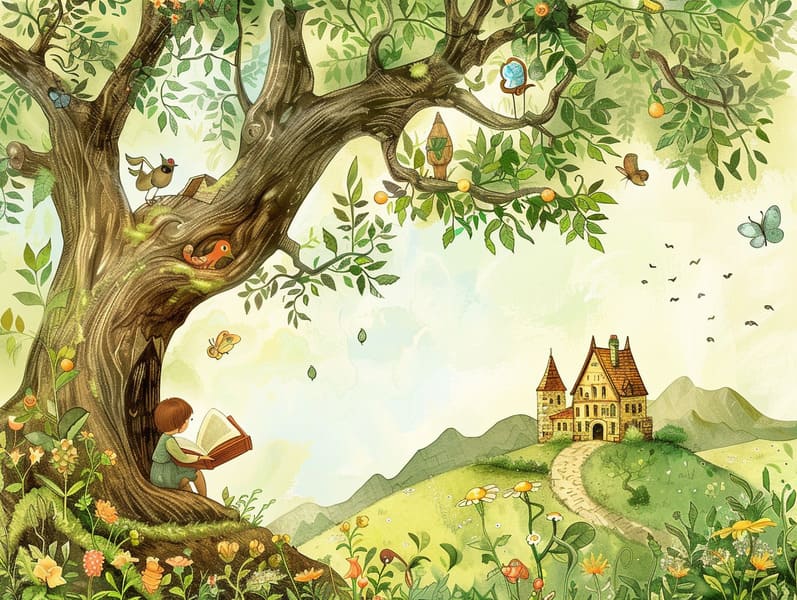The Creation of Classic Fairy Tales and Their Unending Appeal.
The Creation of Classic Fairy Tales and Their Unending Appeal.
Blog Article

Historical fairy tales have long histories. These narratives have been told from one generation to the next centuries before they were ever transcribed. They arose from a variety of societies, including Indigenous traditions. They were initially shared among older generations, often carrying themes and messages pertaining to the societal norms and beliefs of the time.
The renowned Brothers Grimm, Jacob and Wilhelm, were among the first to compile many of these beloved tales. Their anthology, "Grimm's Fairy Tales," included classics like "Ashenputtel," "The Bread Crumb Trail," and "Snow White," which have since become cornerstones in the world of iconic fairy tales. Similarly, the Danish author's whimsical tales, such as "The Little Mermaid," and "The Duckling's Story," have won hearts worldwide, securing their place in the pantheon of treasured fairy tales.
Despite their historical roots, fairy tales remain as applicable as ever, especially as kids' bedtime tales. These delightful tales are now available in different formats, including gorgeously illustrated books, captivating animations, and online storybooks.
Their lasting appeal can be connected to several captivating elements:
Life Lessons: Timeless fairy tales often impart important moral lessons. Narratives like "The Story of the Boy Who Cried Wolf" teach the benefit of honesty, while "The Story of the Tortoise and the Hare" emphasize the benefits of tenacity and humbleness. These narratives offer young readers clear distinctions between good and bad, developing their moral compass in a soft yet lasting way.
Kindness and Comprehension: Classic fairy tales frequently showcase protagonists facing difficulties and adversities, encouraging audiences to comprehend with their struggles and champion their triumphs. For instance, "Beauty's Beast" demonstrates the value of seeing beyond looks to understand the true character of a individual, building tenderness and appreciation.
Cultural Appreciation: Many old fairy tales are rooted in the cultural contexts from which they originated. Discovering these tales can provide captivating looks into different heritages, fostering a sense of global understanding and knowledge.
Fantasy and Imagination: The enchanted elements in timeless fairy tales—fairy godmothers—stimulate children’s dreams. These narratives guide readers to supernatural realms, inspiring inventive thinking and a sense of amazement that lasts a lifetime.
Traditional fairy tales are not only alluring but also informative. They work as charming tools in nurturing various cognitive and affective skills in kids. When fairy tales are voiced, they develop language development by introducing new vocabulary and complex sentence structures. This practice also nurtures listening skills and focus, as children listen intently, prepared to see what happens next.
Furthermore, talking about the themes and characters of fairy tales can sharpen analytical skills and thought processes. Children are shown to see patterns, forecast, and catch on to cause and effect. These examinations also encourage young readers say their thoughts and feelings, promoting their emotional intelligence.
In today’s modern era, the proliferation of internet fairy tales has made these tales more attainable than ever. Internet sites and programs give extensive collections of bedtime fairy tales that can be enjoyed or heard anytime, anywhere. Fairy tales narrated are particularly sought after, featuring an delightful method for the young to appreciate these delightful tales. Sound books and narrated videos move characters and settings to life, often enhanced by delightful harmonies and songs that enhance the tale journey.
The timeless appeal of old fairy tales lies in their ability to change check it out to new eras while keeping their main lessons. Contemporary retellings of these fairy tales often bring in more inclusive protagonists and modern settings, making them meaningful to today’s audience. However, the essential messages of gallantry, benevolence, and equity remain unchanged, continuing to appeal to young listeners of all ages.
Traditional fairy tales also offer a sense of warmth and closeness. They highlight a tidy narrative with a unmistakable beginning, middle, and end, often closing with the closure of conflicts and the triumph of virtue over vice. This dependability can be consoling for the young, rendering a sense of reliability in an inconstant world.
Ancient fairy tales continue to delight and inform new generations, maintaining their enchantment and significance in modern society. As children's bedtime stories, they bequeath a perfect blend of fantasy and learning, encouraging moral values, empathy, and creativity. The proliferation of digital fairy tales and the widespread nature of fairy tales read out loud confirm that these ancient stories remain acquirable to new generations.
By retaining and spreading these tales, we continue to recognize the rich tapestry of tradition and cultural heritage. Whether you are viewing a beautifully illustrated book, seeing a cyber library, or playing an narrated book, the captivation of traditional fairy tales is always within reach. These tales illustrate of the lasting strength of storytelling and its ability to unite us across epochs and places.
If you are discovering a gorgeously illustrated book, experiencing a digital library, or listening via an read-aloud book, the enchantment of old fairy tales is always within reach.
These stories convey of the consistent ability of narratives and its ability to bring us together across eras and regions, establishing a link that enchants and educates alike.